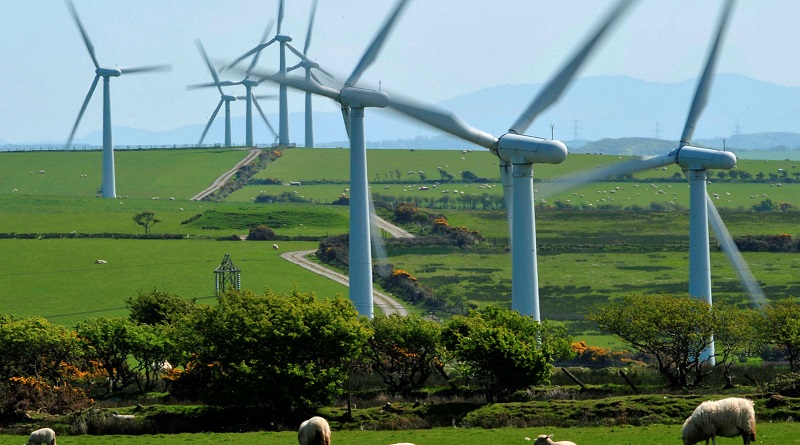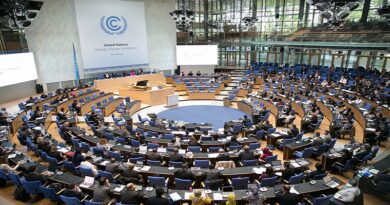Simon Stiell: 2023 must be a pivot point for the Energy Transition
Remarks by UNFCCC Executive Secretary Simon Stiell to the Oslo Energy Forum (14 February 2022)
Friends, Colleagues,
Thank you for participating in this excellent discussion on the necessity of the energy transition. I’m not just here to wrap things up but to push you out of your comfort zones.
To me, the question is not “how to balance the energy trilemma” but “how to solve the energy trilemma”.
We have an incredible opportunity in the next ten months to do exactly that: to make 2023 the pivot point for the energy transition — a definitive moment in what must be a decisive decade for climate action.
For years, the world was told that issues on any energy transition were too difficult to overcome…the costs were too great, attitudes too ingrained, political positions too deadlocked.
Yet precisely the opposite has occurred. We’ve witnessed global momentum for the global energy transition.
The proof is clear in outcomes from the formal climate change process and on-the-ground action.
The Glasgow Climate Pact, for the first time in UNFCCC history, called on governments to accelerate transitions towards low-emission energy systems.
Decisions adopted by all Parties in Sharm El-Sheikh stressed the urgent need for clean and “just” energy transition through low-emission and renewable energy.
Parties further stressed that geopolitics “should not be used as a pretext for backtracking, backsliding or de-prioritizing climate action”.
In the meantime — outside the formal process — the last five years have seen the acceptance, transformation and exponential growth of renewables surpassing almost every projection.
In Davos, Nicolas Stern and Mattia Romani produced a paper for the WEF showing that in five years more than half of the tipping points for crucial green technologies will be met, making them competitive in key markets.
They point out that this growth story represents the greatest investment opportunity since the industrial revolution…
…one already transforming policy, investments and partnerships across governments and businesses.
Opportunities related to the clean energy transition are there for all countries, all businesses…as are opportunities to make this a just transition for all workers.
Friends, this is why I say it’s time to move from discussions about balance to solutions — solutions that get us from where we are now to where science tells us we need to be by 2030 if we’re to ultimately limit long-term climate chaos.
The next 10 months leading to COP28 give us a unique opportunity to take those steps. It features the world’s first Global Stocktake — a moment of truth. This is not just another report; it has the potential to be a transformational moment in history.
Why? Because the GST must be a tool which gives us a roadmap to 2030 and beyond.
One which can guide us sector by sector, region by region, actor by actor on what surgical interventions must take place to align ourselves with a resilient 1.5C world
The energy sector is the vanguard. Positive engagement and solid commitments by the sector can reverberate through all sectors, all economies and all countries.
Here’s my challenge to you:
Start envisioning the most ambitious, political outcome we need to see for the GST if we’re to truly transform the energy sector.
It must be solution-oriented. Specifically, we need COP and GST decisions that will determine how countries will:
Accelerate the energy transition in not only energy supply but also end-use sectors including transport, buildings and industry.
How they’ll promote international cooperation aiming to accelerate energy transition — including through just energy transition partnerships, global methane pledges and renewable energy initiatives.
How they’ll strengthen efforts to deploy carbon capture and carbon dioxide removal technologies to phase down unabated fossil fuel-based power.
How they’ll develop and deploy key technologies including hydrogen electrolysis, energy storage, electrified vehicles and more.
How they’ll adopt and implement mitigation plan now to halve emissions by 2030. I asked all leaders in Sharm El Sheikh to get me those plans by early this year. I eagerly await the response.
How they’ll strengthen efforts to reduce emissions from international aviation and shipping — for example, how they’ll build on ICAO’s 2050 net-zero commitment and outcomes from the International Maritime Organization meetings this year.
We need a GST decision to identify existing emissions gaps in energy sector that will get us from what is currently in the Nationally Determined Contributions and where we need to be under the Paris Agreement. This must be thorough — let’s identify specific gaps….by energy supply, transport, buildings, industry and more. For the best results we need to dig deep.
Finally, if we want a just energy transition, we need a strong and ambitious work program to drive it. This was mandated at COP27 and it needs to be established at COP28. We need your support to bring it over the line.
Friends,
Each of these requires deep thinking and leadership. None have easy answers, but all are essential to get us from discussion to action. This requires collaboration across jurisdictions and traditional ways of working.
Yet if we are in — truly in — on the energy transition, this is what progress looks like. This is what commitment looks like.
It’s also what opportunity looks like.
IRENA recently reported that a renewable energy path could potentially see the creation of more than 85 million new jobs. New jobs in healthier communities with less pollution.
We have 10 months. UN Climate Change stands ready to provide whatever support you need to achieve the best global stocktake and the best COP28 result possible. It’s entirely within our grasp. I look forward to progress on the areas I’ve identified — progress that leads to solutions.




